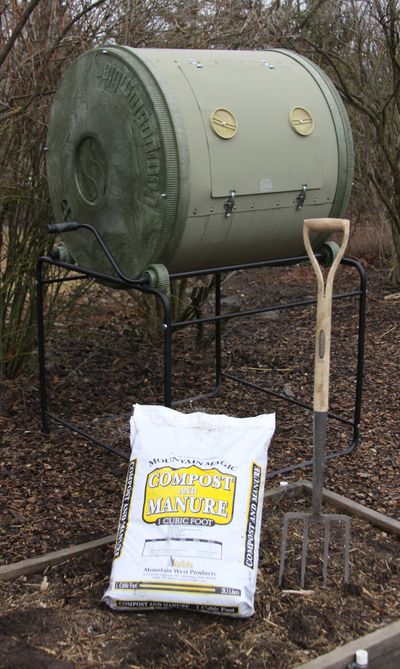Soil, composting keys to successful gardening season

Today’s topic can easily be summed up by this: If you take good care of the soil in your garden, it will take good care of your plants.
Whether you are growing flowers, vegetables, roses or shrubs, all plants take up nutrients from the soil so it’s important to replenish them every year.
How do you accomplish that? The first step is to make sure your soil is dry enough to work with. To determine this, grab a handful of soil and squeeze it in your hand. If it feels wet and clumps together, it’s too soon. But if the soil easily breaks apart and is only lightly moist, it can be worked with.
The next step is to add organic nutrients like compost, composted steer manure, peat moss, decomposing leaves, weed-free straw or grass clippings from a lawn that hasn’t been treated with chemicals. To protect the soil structure, just turn over the top two inches of soil instead of digging deeply.
Making your own compost is a perfect way to produce organic amendments for your soil.
Last fall, I had an interesting composting experience. At the end of the growing season, I pulled up all of the plants that couldn’t be turned into the soil. I fed all of that material into a chipper-shredder and created a pile of the chopped-up plants.
Within about three days, I noticed the pile was steaming. I grabbed my compost thermometer and discovered the pile had already reached a temperature of 140 degrees F. That was the most successful compost pile I’ve ever had.
This was a good demonstration of the importance of chopping up garden waste into small pieces so microorganisms in the soil have plenty of surfaces to chew on. It sped up the decomposition process so I intend to use this method from now on.
Composting is fairly simple but there are some guidelines to follow:
The pile should be a mix of green materials, which contain nitrogen, and brown materials, which contain carbon.
Examples of green materials include grass clippings, kitchen scraps and manures from cows, horses, goats, poultry or rabbits. Brown materials are very fibrous and include dried leaves, cornstalks and straw. Even sheets of newspaper work well because the ink is made from soy products instead of chemicals.
Items that should not be added to compost piles include oils, meats or dairy products as they can attract rodents. Do not use manures from carnivorous animals because they can contain harmful pathogens. Dispose of diseased plants rather than adding them to the pile to avoid spreading disease in your garden.
The ratio of carbon-to-nitrogen materials should be about 2 parts green materials to 1 part brown.
Compost piles should be located in or near the garden, in a dry, sunny spot. The materials can be placed into a wire, wooden or plastic compost bin or loosely piled in a heap. If using a bin, be sure moisture can easily drain from it. The materials in your compost pile should be lightly moist, the way a wrung-out sponge feels.
Don’t forget that the microorganisms require plenty of oxygen to help with decomposition. A pipe with drilled holes can be placed into the center of the pile or the pile should be turned over every few weeks.